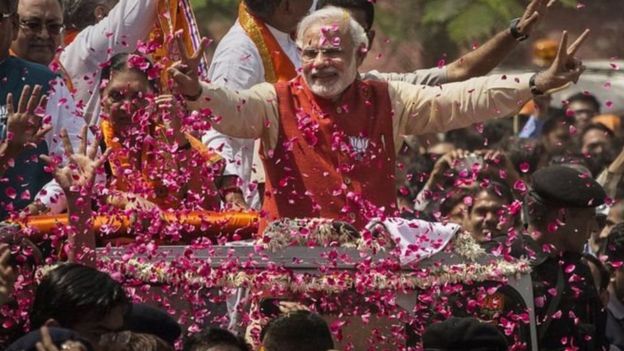Indian Prime Minister Narendra Modi was the most challenging year in the years 2017 in economic affairs.
What is the year 2018 of the Indian economy?
It emerged a year ago that India would be an important driving force of the world economy. India achieved a high growth rate than China, which suffered economic stagnation, and reached India in 2016 as a fast developing economy in the world.
From January to December of that year, India's economic growth rate was more than 7%. In the quarter of April to June, the economy grew by 5.7 percent in 2017, while it was 7.9 percent. That is the lowest growth rate in the previous three years.
Two points have made a sharp impact on the Indian economy in 2017. First, the removal of the cash value of 500 and 1000 rupees notes announced in favor of 86% of the cash flow in the end of 2016.
Second, in June 2017, the GDR is a freight and service tax, with the aim of removing various state and federal taxes and implementing "one country tax".
Not only 2017 is bad news for the BJP-led Bharatiya Janata Party. India has 30 places ahead of the list of the 100 Best Countries to Work For.
Moody's rating agency has increased India's economic rating for the first time since 2004. Indian stock markets grew by 30% over the previous year.
The central government has announced Rs 2.11 lakh crore as capital for public sector banks, which suffer from weekly and inactive assets. However, 2018 is a difficult year for the Indian state.
Growth should be speeded up
The central aim of the central government is to increase the economic growth rate last year.
"The economy will recover in 2018 because the impact of GST and money laundering will decrease," says JP Morgan's Chief Economist for Asia, Sajjit Sinai.
In order to regulate the GST tax rate, the government reduced the tax rate of 178 items.
The International Monetary Fund (IMF) has said that the Indian economy will grow by 7.4% in fiscal year 2018-19. It is less than 7.7% earlier. That is a challenge for the government in 2018 if the economy is growing and the creation of jobs. In India, the second place in the world is to create 1.2 crore new jobs annually to provide adequate jobs for young people.
But small-scale businesses affected by the 2016 monetary value were further affected by the GST. They were shut down by a large number of millions, especially those working in the institution, who lost their jobs.
What is the year 2018 of the Indian economy?
Three major industries, such as agriculture, construction and small industries, have been working hard to create new jobs in recent years.
Although this is a long-term problem, experts predict that the government may try to get the election to come in 2019.
The price of petroleum products and inflation, the price of rising crude oil products, is expected to increase not only the state's costs but also inflation. Last year, the fiscal deficit was less than 4% of GDP. India imported 70% of its domestic demand for petroleum products. Therefore, the Government of India should have to accept the retail price of petroleum products or the government should accept the excess costs of import.
Seismic agriculture
With many struggles across the country, 2017 was the year of farmers' struggles. More than half of Indian people depend on agriculture for their livelihood.
Uttar Pradesh and Maharashtra, which have declared agricultural credit discounts, are in trouble in implementing them.
"There is nothing big to do with the collapse of the state because agriculture is the state of the state," says Madan Sapnavis, Chief Economist at Car Wrestling.
Local elections will be held in 2018 in eight Indian states. Of these, four are rural population. With a third of the Bharatiya Janata rule, the Central Government may do anything to influence the success of the party if it does anything for the agriculture sector.
Do not have economic reforms in 2018?
He is credited with making the most important economic reforms since his arrival in power. But experts believe that he will be more careful about reforms in the 2019 parliamentary election as the economy collapses in 2017.
The cost of social benefits is expected to increase this year and the central government is expected to focus on rural India.
In any case, the 2018 will be a decisive year. His government's handling of the economy will definitely impact on the results of the parliamentary election to be held in 2019.


Comments
Post a Comment